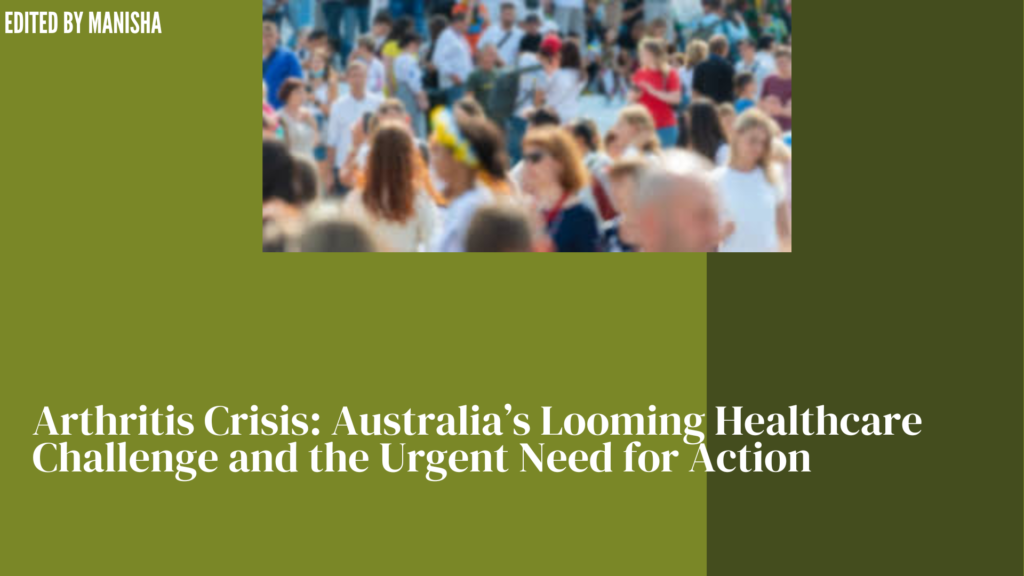
New projections for arthritis in Australia highlight the need for increased investment in the healthcare system to meet future demand and ensure high-value care. Arthritis, an umbrella term for over 100 different conditions, impacts individuals of all ages. It primarily affects joints but can also impact organs like the skin and eyes. Despite being a condition often linked to older age, arthritis affects individuals across all age groups, from babies to the elderly. National Health Survey data indicates that approximately 15% of Australians currently have some form of arthritis, with most people knowing someone affected, even when the symptoms aren’t immediately visible.
Arthritis is typically associated with pain, stiffness, and reduced mobility, which can significantly affect an individual’s quality of life and ability to engage in work, family, and social activities. Effective prevention strategies for arthritis are scarce, and there is no known cure. As such, understanding the future burden of arthritis is essential. Forecasting these figures allows us to plan for the necessary healthcare workforce—encompassing medical, surgical, nursing, and allied health professionals—who will be needed to care for the growing population of arthritis patients. It also presents an opportunity to raise public awareness about arthritis and advocate for more research into prevention, treatment, and the delivery of effective, cost-efficient care to optimize patient outcomes.
Projected Number of Australians Living with Arthritis
According to recent projections, 5.39 million Australians are expected to be living with arthritis by 2040, a 31% increase from 2025 figures. In scenarios with higher population growth, this number could rise to 5.56 million. In all models, women are expected to bear the greatest burden of arthritis. For osteoarthritis—the most prevalent type of arthritis and the leading cause of hip, knee, and shoulder replacements—projections suggest 3.11 million Australians will have this condition by 2040.
The age groups most affected will include older adults, though a growing number of individuals of working age (primarily millennials) will also experience osteoarthritis. It is projected that over 1.03 million people between 45 and 64 years old will have osteoarthritis by 2040, raising concerns about its impact on work productivity and workforce participation. This forecast is conservative and does not account for potential increases in obesity or joint injuries, both of which contribute to knee osteoarthritis.
For rheumatoid arthritis, the second most common form of arthritis, over 186,000 additional Australians are expected to require specialist rheumatology care by 2040. The number of children and adolescents with juvenile idiopathic arthritis is anticipated to remain largely unchanged due to limited population growth in these age groups.
Arthritis Burden Versus Research Investment
In 2020–21, health system expenditures for osteoarthritis and rheumatoid arthritis amounted to $5.26 billion, with projections indicating this will rise to over $11.92 billion by 2040. However, the level of research funding for arthritis is disproportionately low. In 2022–23, only $42.8 million was allocated to musculoskeletal research by the National Health and Medical Research Council (NHMRC), which includes all musculoskeletal diseases. This figure pales in comparison to the research investments made for other prevalent health conditions: $102.8 million for mental health, $94.1 million for cardiovascular disease, and $161.1 million for cancer. Research funding for musculoskeletal diseases represented just 0.27% of the total $15.9 billion spent on these conditions in 2022–23, which is much lower than the 0.87%, 0.58%, and 0.86% allocated to mental health, cardiovascular disease, and cancer, respectively.
While Australia has a well-established clinical trials network focused on arthritis, there is a strong need for a targeted research mission under the Medical Research Future Fund (MRFF) to help build a sustainable workforce for musculoskeletal health and foster innovative research, from basic science to clinical application.
Ensuring Timely Access to Care
Currently, prevention options for arthritis are limited, making it crucial that those affected have timely access to the care they need. This is especially important for those living outside major urban centers. The rising prevalence of arthritis demands well-resourced healthcare services capable of providing timely treatment to an increasing number of patients, without long waiting times. For inflammatory arthritis, ensuring access to specialist rheumatology care is vital for diagnosing and managing the condition to minimize joint damage.
Australia is facing a shortage of rheumatologists, which is expected to worsen, especially in regional and rural areas. Currently, there is a shortfall of 302 adult rheumatologists, and only 20 practicing pediatric rheumatologists (13 full-time equivalents) are available to care for children with juvenile idiopathic arthritis. To address this, it is urgent to increase the number of advanced training positions for both adult and pediatric rheumatologists.
Additionally, the growing demand for arthritis care may require the implementation of new approaches. The COVID-19 pandemic accelerated the adoption of telehealth, and continuing investment in telehealth and virtual healthcare models may help improve access to care for more Australians, especially those living in non-metropolitan areas or those experiencing significant disability.
The authors of this article are Professor Ilana Ackerman, a musculoskeletal epidemiologist and physiotherapist, and Professor Rachelle Buchbinder, a rheumatologist and clinical epidemiologist. They have disclosed no relevant affiliations beyond their academic roles.
These projections serve as a call for urgent action to address the rising burden of arthritis in Australia, ensuring that resources, research, and healthcare services are adequately prepared for the future.